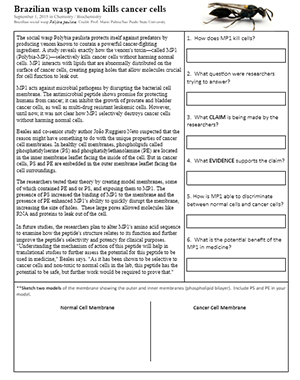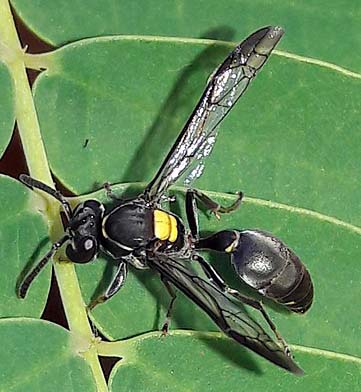
Students evaluate a claim made by researchers that wasp venom could be used to fight cancer. The original article can be found at Phys.org and describes the effect of the toxin on cancer cells. Mainly, the toxin interacts with lipids in the cell membrane and causes the cell contents to leak out. The toxin does not seem to affect healthy cells.
The venom has potential use as a chemotherapeutic. Meaning, it could be used to treat certain types of cancer. The venom contains a peptide called Polybia-MP1 that increases the permeability in cells. It seems to only target cancer cells. Other chemicals used in chemotherapy also affect healthy cells. This is why chemotherapy causes side effects, like hair loss.
The reason that the toxin does not affect healthy cells is that cancer cells have a unique membrane property. Specific types of phospholipids are oriented facing the outside of the cell where the venom can interact with them.
In healthy cells, these same phospholipids are oriented toward the inner membrane. More information can be found at the original publication in cell.com

Students read an abridged version of the study and answer questions about the toxin, called MP1 and how it affects the cell membrane. They provide evidence from the research to support the claim and then create a model of the membrane to explain how the toxin works.
I use this as an introductory lesson on the cell membrane in my AP Biology class. Cell membrane biology has important applications for health and maintaining homeostasis. Students will also do a case study on cystic fibrosis that explores transport proteins.

